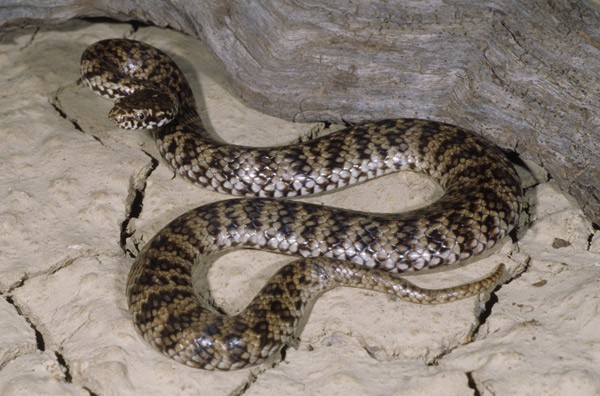How many of us bushwalk with a few crepe bandages in our pack under the impression that these will be the best thing to use for bandaging and immobilising a limb should we be unlucky enough to be bitten by a snake?
Recent research shows that the effectiveness of traditional crepe-style bandages is significantly lower than modern elastic bandages, and even elastic bandages will be compromised if they’re not applied at the correct pressure. In most cases it has been found that not enough pressure is applied when using these bandages, decreasing their efficacy.
A much better bandage is now available in Australia – the Setopress (currently the only brand of its type). This bandage is specifically designed to regulate venous drainage.
The Setopress Bandage has a number of advantages over other bandages. Firstly, it is wider (10cm) and longer (3.5m) than most crepe or elastic bandages. A single bandage will reach from the extremities to the knee or armpit, which means that less bandages need to be carried and this may mean that people will be more likely to carry them. Secondly, the bandage allows you to regulate the pressure applied by using a series of rectangles printed along its length. As the bandage is stretched, the rectangles become squares. Thirdly, the squares are printed off-centre in order to assist the first aider in creating a wrap of half width overlap at each turn. This half width overlap is required to provide correct pressure, and also to prevent the bandage causing a tourniquet effect. Finally, the bandage is textured, which helps to prevent it slipping, which would immediately reduce the pressure and effectiveness of the bandage.
In terms of bandaging technique, firm pressure bandaging is required to restrict the lymphatic flow of toxins after snake bite. Strict limb immobilisation is necessary to minimise lymphatic flow, since walking after snake bite will inevitably result in the spread of toxins throughout the body, and render any pressure bandaging useless. More detailed insight can be gained from the following website and papers:
- Australian Venom Research Unity – First aid for snakebite
- Europe PubMed Central – Lymphatic flow rates and first-aid in simulated peripheral snake or spider envenomation
- Oxford Journals – The Ebbinghaus retention curve: training does not increase the ability to apply pressure immobilisation in simulated snake bite—implications for snake bite first aid in the developing world
Crepe bandages still have their uses, and I will still keep at least one in my hiking kit. They can be used to bandage a sprained ankle or to add a splint to a broken limb, or even an already-pressure-bandaged snake bite. So don’t leave them at home just yet.
As a bushwalker and botanist, I am regularly in snake habitats for work and pleasure. In my opinion, being aware and informed of the danger is important. In Australia, we have no large carnivores that we need to fear when out in the bush, except for crocodiles in northern Australia. Rather, we should watch where we walk and I was taught from an early age to look at where I step and pay particular attention to logs.
Herpetologist colleagues tell me that gaiters are likely to be effective against snake bite because Australian snakes generally have small fangs. Also, even if the snake were to bite through a closely woven, thick gaiter, the venom will either be absorbed by the gaiter itself, or, due to its position away from the calf, will lead to the venom running down the inside rather than making contact with skin. While there is no research into the efficacy of gaiters, that I am aware of, I will continue to wear mine.
Finally, it may be an idea to keep an eye on your pack. During a vegetation survey in Gippsland, Victoria, I was 20 metres from my daypack and walked back to it to see a large red-bellied black snake moving straight towards its opening. Imagine unpacking that in a motel room!


